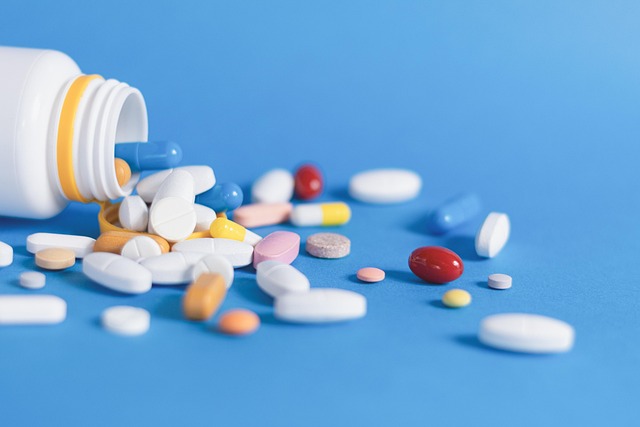GLP-1 receptor agonists, or GLP-1 drugs, are revolutionizing diabetes management and weight loss by mimicking natural gut hormones. These medications enhance insulin secretion, suppress glucagon production, and improve glycemic control with reduced hypoglycemia risk. They also increase satiety and decrease appetite, offering a comprehensive approach to managing type 2 diabetes and obesity. Key GLP-1 drugs like Byetta, Ozempic, liraglutide, dulaglitide, and semaglutide provide various dosing options and benefits tailored to patient needs. Extensive clinical trials demonstrate their safety and efficacy, with promising findings in cardiovascular health. However, side effects such as gastrointestinal issues and potential pancreatitis require careful monitoring. Future research aims to enhance delivery methods and unlock the full potential of GLP-1 drugs for better patient outcomes.
GLP-1 receptor agonists, or GLP-1 drugs, are a class of medications that have revolutionized diabetes management. These drugs mimic the effects of the natural hormone GLP-1, enhancing insulin secretion and reducing glucagon release in a glucose-dependent manner. Research studies have consistently demonstrated their safety and efficacy in improving glycemic control for individuals with type 2 diabetes. This article explores the mechanisms, types, clinical trials, potential side effects, current uses, and future prospects of these groundbreaking GLP-1 drugs.
What are GLP-1 Receptor Agonists?

GLP-1 receptor agonists, a class of drugs designed to mimic the effects of the natural hormone glucagon-like peptide-1 (GLP-1), have emerged as powerful tools in managing type 2 diabetes and promoting weight loss. These GLP-1 drugs work by stimulating specific receptors in the body, enhancing insulin secretion when blood sugar levels rise and suppressing glucagon release to lower glucose production. This dual action helps to improve glycemic control while also contributing to reduced appetite and increased feelings of fullness, making them valuable in the treatment of diabetes and obesity.
Research has shown that GLP-1 receptor agonists can significantly lower HbA1c levels (a measure of long-term blood sugar control) and help patients achieve better overall glycemic management. Moreover, some of these drugs have been approved not only for diabetes treatment but also for weight management, offering a novel approach to tackling obesity alongside its associated metabolic disorders.
Mechanism of Action and Benefits

GLP-1 receptor agonists, a class of drugs designed to mimic the effects of the gut hormone GLP-1, have shown remarkable potential in managing type 2 diabetes and promoting weight loss. Their mechanism of action involves binding to and activating GLP-1 receptors in the brain and pancreas, leading to key physiological responses. One primary benefit is their ability to stimulate insulin secretion in a glucose-dependent manner, helping to lower blood sugar levels. Additionally, these agonists suppress glucagon release, which reduces liver glucose production. This dual action significantly improves glycemic control without increasing the risk of hypoglycemia, making them a valuable addition to diabetes therapy.
Beyond their impact on blood sugar regulation, GLP-1 drugs offer several other advantages. They promote satiety and reduce appetite, leading to decreased food intake and subsequent weight loss. This effect is particularly beneficial for managing obesity and related health conditions. Furthermore, these medications have been linked to improved cardiovascular outcomes, reduced inflammation, and enhanced overall metabolic health, offering a more comprehensive approach to patient care compared to traditional diabetes treatments.
Types of GLP-1 Drugs Available

The landscape of GLP-1 drugs is diverse, offering several options for managing blood sugar levels in individuals with type 2 diabetes. These medications work by mimicking the effects of the natural hormone glucagon-like peptide-1 (GLP-1), which stimulates insulin production and suppresses glucagon release. One common class of GLP-1 drugs are exendin-4 analogues, such as Byetta and Ozempic, known for their long-acting properties and once-weekly administration. Another type includes liraglutide, a rapid-acting analogue that has gained popularity due to its convenience and potential weight management benefits.
Additionally, dulaglitide and semaglutide have emerged as powerful GLP-1 drugs, providing significant glycemic control with once-daily dosing. These drugs have revolutionized diabetes treatment, offering improved efficacy and patient compliance compared to traditional insulin or other antidiabetic medications. The variety of GLP-1 drugs available allows healthcare professionals to tailor treatments based on individual patient needs, preferences, and lifestyle considerations.
Key Research Studies on Safety and Efficacy

Several key research studies have explored the safety and efficacy of GLP-1 receptor agonists, also known as GLP-1 drugs. These clinical trials have provided substantial evidence supporting their role in managing type 2 diabetes and even weight management. One notable study, the EXAMINE trial, evaluated the effects of a GLP-1 drug (linagliptin) in comparison to placebo and found significant improvements in glycemic control without an increased risk of hypoglycemia.
Another prominent research effort, the LEAD clinical trial series, examined multiple GLP-1 drugs across different patient populations. These studies consistently demonstrated that GLP-1 receptor agonists not only lower blood sugar levels but also aid in weight reduction. The findings underscore the potential of GLP-1 drugs as a comprehensive solution for treating metabolic conditions, highlighting their promise in both diabetes management and weight loss journeys.
Clinical Trials and Their Findings

Clinical trials have played a pivotal role in elucidating the efficacy and safety profile of GLP-1 receptor agonists (GLP-1 drugs). These studies, conducted across diverse populations, have consistently demonstrated the potential of GLP-1 drugs in managing type 2 diabetes. Key findings include significant reductions in HbA1c levels, often exceeding traditional targets, alongside weight loss benefits—a dual impact that has garnered significant interest from healthcare providers and patients alike. Moreover, the trials have revealed a favorable safety profile, with the most common adverse effects being gastrointestinal, generally mild to moderate and manageable.
Potential Side Effects and Risks

While GLP-1 receptor agonists offer significant benefits for managing diabetes and weight, it’s crucial to consider potential side effects and risks associated with these drugs. Common gastrointestinal issues like nausea, vomiting, and diarrhea are frequently reported, particularly during the initial stages of treatment. These symptoms often subside as the body adjusts to the medication. More serious, yet rare, adverse events include pancreatitis and kidney problems. Long-term studies are ongoing to fully understand the impact of these drugs on cardiovascular health, as there have been mixed findings regarding their effects on heart conditions.
The risk of hypoglycemia, while less common than with insulin, is still a concern, especially when GLP-1 drugs are combined with other diabetes medications. Certain populations, such as individuals with kidney disease or those undergoing bariatric surgery, may face elevated risks and require careful monitoring. Additionally, the potential for dependency and abuse has sparked discussions regarding long-term use and access to these GLP-1 drugs, underscoring the importance of ongoing research and responsible prescribing practices.
Current and Future Uses in Diabetes Management

GLP-1 receptor agonists, or GLP-1 drugs, have emerged as a powerful tool in diabetes management. They mimic the effects of the natural hormone glucagon-like peptide-1, which stimulates insulin release and suppresses glucagon secretion, leading to improved glycemic control. Currently, these drugs are primarily used for type 2 diabetes, helping to reduce blood sugar levels and often in combination with other medications.
Looking ahead, research suggests that GLP-1 drugs could have broader applications beyond diabetes. They show potential in weight management by promoting satiety and reducing appetite, opening up possibilities for treating obesity-related conditions. Additionally, ongoing studies explore their role in cardiovascular health, as these drugs may offer benefits in preventing heart disease, a significant complication of diabetes.
Conclusion: The Promise and Limitations

The research on GLP-1 receptor agonists has unveiled promising prospects for managing diabetes and potentially other metabolic disorders. These drugs mimic the effects of the natural hormone GLP-1, enhancing insulin secretion and suppressing glucagon release, leading to improved glycemic control. Numerous studies have demonstrated their efficacy in reducing HbA1c levels, a key marker of long-term blood sugar control, making them valuable tools in diabetes treatment.
However, despite these advancements, there are limitations to consider. GLP-1 drugs can cause side effects such as nausea and vomiting, particularly during the initial stages of treatment. Moreover, their short duration of action and potential for weight gain remain challenges, impacting patient adherence and outcomes. Future research should focus on enhancing drug delivery methods, optimizing dosage forms, and exploring combinatorial therapies to address these limitations while unlocking the full potential of GLP-1 receptor agonists in improving patient lives.
